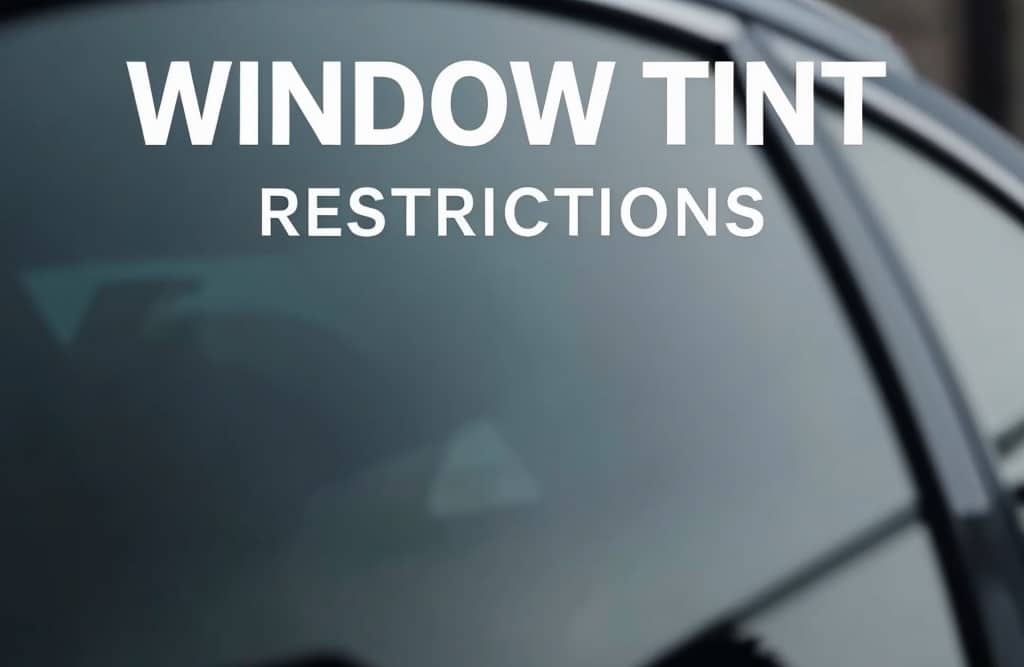Are you worried about the window tint installation, or do you not properly know the laws enforced in your state regarding window tint reflection? There’s no need to worry about it. This blog will provide a comprehensive guide about window tint reflection restrictions.
Reflected window tints primarily cool down the car and have fewer reflections inside. However, using less reflective window tints and following the rules according to your state protects you from legal consequences. Meanwhile, if you are not obeying the strict laws of your state, you may be in boiling water. So, keep reading this blog to know more about these laws.
What’s the Deal with Window Tint Laws?
To deal with the window tint laws is not an algebra question. It is very simple and easy to cope up with it. In simple words, window tint installation is very smooth and cool if you are aware of its rules enforced by the state. You can use tints according to the permitted VLT and reflection. However, it can become a headache and burden on your pocket, if you don’t obey the rules.
Why Window Tint Reflection Matters
Do you think about tinting your car windows? You have to know about window tint reflection. This isn’t just some minor detail; it’s all about how much light bounces off your tint film. The less reflective your tint, the less glare and heat you’ll deal with inside your car.
States have their own rules for this. Take California, for example. They say your front-side windows can’t be shinier than regular glass. This rule helps keep everyone safe and ensures that other drivers and pedestrians can see you.
So, if you’re putting tint on your car, make sure you know your state’s laws. Stick to them, and you’ll keep calm and avoid any run-ins by the law.
Car Window Tint Regulations by State
Okay, let’s talk window tinting. It’s not just about looking cool or keeping your car’s interior from turning into an oven. Each state has rules about how dark or reflective your car’s windows can be. So, to stay on the right side of the law, you must know your state’s Visible Light Transmission (VLT) limits.
Understand the VLT (Visible Light Transmission)
The VLT percentage tells you how much light gets through your windows. It’s simple math: a higher rate means more light passes through; a lower percentage means your windows are darker. And guess what? Each state has rules for what’s allowed on different windows in your car – front, back, and rear.
Take a look at these examples, which show varying guidelines:
| State | Front-Side Window Tint % | Back-Side Window Tint % | Rear Window Tint % |
|---|---|---|---|
| California | 70% | Anything goes | 70% |
| Texas | 25% | Anything goes | Anything goes |
| New York | 70% | 70% | 70% |
| Florida | 28% | 15% | 15% |
These rules aren’t just a suggestion, guys. They’re there to ensure you (and everyone else) can see clearly while driving. If you obey the rules correctly, it means no unexpected stops by the cops and no costly fines.
Keep yourself Legal and Safe.
In case you are following your state’s VLT guidelines isn’t just about dodging tickets – it’s about to keep yourself safe. Imagine cruising down the highway with dark windows that you can barely see. It’s not a joke and not secure. Plus, police officers must see inside your car for safety during traffic stops.
Always check your state’s official resources for the most accurate and recent info. However, you’ll dodge those pesky tint-related fines and other unwelcome surprise tickets this way.
Remember, knowing your VLT percentages and keeping your car’s windows within legal limits isn’t just a good idea – keeping you and others safe on the road is essential.

